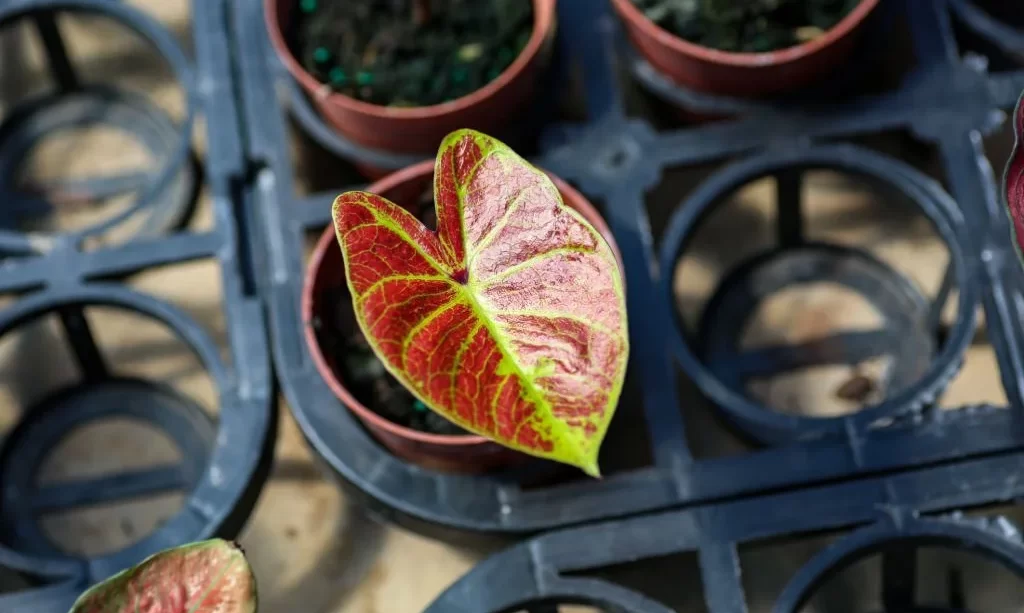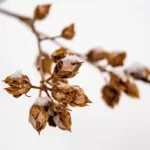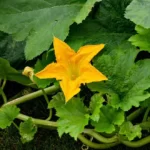Caladiums, with their dazzling and intricately patterned leaves, are a gardener’s delight, adding a burst of vibrant color to shaded and partially shaded areas. To cultivate a thriving display of these eye-catching plants, it’s essential to begin with the right foundation. In this guide, we’ll explore the art of planting caladium bulbs, from selecting the perfect location to preparing the ideal soil for their growth. Whether you’re a seasoned gardener or a newcomer to the world of caladiums, this step-by-step journey will equip you with the knowledge to create a stunning canvas of color in your garden.
- Beautiful Caldiums provide beautiful color for any garden. They come in a variety of colors and sizes to make excellent accent plants for every garden
Choosing the Right Location
The first step in planting caladium bulbs is to find the perfect spot in your garden where these colorful beauties can thrive:
- Filtered Sunlight or Partial Shade: Caladiums adore filtered sunlight or partial shade. Choose a location that receives gentle, indirect sunlight for a significant portion of the day. This protects their delicate leaves from scorching sun and ensures their vibrant colors stand out.
- Consider Your Climate: Keep your local climate in mind when selecting a spot for caladiums. While they adore warmth and humidity, they may need more shade in regions with scorching summers.
- Visual Impact: Think about how caladiums will complement the overall aesthetic of your garden. Their striking foliage can serve as a focal point or create a harmonious backdrop for other plants.
Preparing the Soil
The soil you plant caladiums in plays a crucial role in their growth and vibrancy:
- Well-Draining Soil: Caladiums thrive in well-draining soil. Ensure that your chosen location has soil that doesn’t retain excess moisture, as overly wet conditions can lead to bulb rot.
- Improving Drainage: If your soil doesn’t drain well naturally, you can enhance drainage by adding organic matter like compost. This not only improves drainage but also enriches the soil with essential nutrients.
- Soil Testing: Consider conducting a soil test to determine the pH and nutrient levels of your garden soil. Caladiums prefer a slightly acidic to neutral pH (around 6.0 to 6.5) and benefit from a balanced blend of nutrients.
By carefully selecting the right location and preparing the soil to meet their specific needs, you’re setting the stage for a successful caladium garden that will dazzle with its brilliant and multicolored foliage. As we continue this journey, we’ll delve deeper into the nuances of planting and caring for caladium bulbs.
- 🌿 Caladium Elegance Unleashed: Elevate your Caladium plant care with Gardenera’s meticulously crafted Caladium Potting Mix, a blend designed to enhance the beauty and vibrancy of your plants.
- 🍃 Premium Ingredients for Optimal Thrive: Our potting mix marries the elements of Canadian Peat Moss, nutrient-rich Worm Castings, lightweight Perlite, and well-structured Sand, creating the perfect foundation for your Caladium’s growth.
- 💦 Moisture Balance at Its Best: The synergy of Canadian Peat Moss and Sand maintains a harmonious moisture balance, offering a nurturing environment where your Caladium’s roots can flourish in a consistently hydrated state.
- 🌱 Organic Nutrient Boost: Worm Castings infusion enriches the mix with organic nutrients, supporting robust foliage growth, bold leaf patterns, and overall plant vitality.
- 🪴 Aeration and Drainage Mastery: Perlite and Sand work together to create a well-aerated and well-draining mix, ensuring efficient water movement and preventing waterlogging for thriving Caladium roots.
Choosing Caladium Bulbs
Selecting the right caladium bulbs is a crucial step in creating a stunning garden display:
- Variety Selection: Caladiums come in a variety of colors and patterns. Consider your color preferences and the overall theme of your garden when choosing bulb varieties. Whether you opt for vibrant reds, serene whites, or a mix of colors, there’s a caladium variety to suit your taste.
- Bulb Quality: When purchasing bulbs, prioritize quality. Look for bulbs that are firm and free from any signs of mold or damage. A healthy bulb is more likely to produce vigorous and vibrant foliage.
- Reputable Sources: Seek bulbs from reputable sources or nurseries known for their quality. Well-established suppliers often offer a wider range of choices and provide bulbs that are more likely to thrive.
- Elegant for shady gardens
Planting Caladium Bulbs
Now, let’s delve into the art of planting caladium bulbs:
- Spacing and Depth: When planting, ensure proper spacing between bulbs, typically around 6 to 12 inches apart. Dig holes to a depth of 2 to 3 inches for smaller bulbs and 3 to 4 inches for larger ones.
- Positioning Bulbs: Place the bulbs in the holes with the “eyes” or growth points facing upward. This is where the new shoots will emerge. Cover them gently with soil, being careful not to press down too firmly.
- Gentle Handling: Handle the bulbs gently to avoid damaging them during planting. Caladium bulbs are delicate, and any injury can affect their growth.
Watering and Mulching
Proper watering and mulching are key to caladium care:
- Watering Needs: Caladiums thrive with consistent moisture, but they don’t appreciate being waterlogged. Water the newly planted bulbs thoroughly to settle them in the soil. Afterward, maintain a regular watering schedule, ensuring that the soil stays consistently moist but not soggy.
- Mulching Benefits: Apply a layer of organic mulch, such as pine straw or leaf compost, around the planted bulbs. Mulch helps retain soil moisture, regulates temperature, and reduces weed competition.
- Adjusting for Climate: In regions with hot, dry summers, consider increasing the mulch layer to retain more moisture. Be mindful not to bury the bulbs too deep under mulch, as this can inhibit growth.
By carefully selecting your caladium bulbs, planting them with precision, and providing the right amount of moisture and mulch, you’re well on your way to nurturing a garden filled with the vibrant and captivating foliage of these remarkable plants. As we continue our journey, we’ll explore the importance of fertilization, ongoing care, and strategies for keeping your caladium garden vibrant and flourishing.
- Scotts best mulch
- Color Guard keeps color lasting all year
- Apply around trees, shrubs, flowers, or vegetables after seeds have germinated and plants have developed
Fertilizing and Care
Maintaining the health and vibrancy of your caladiums requires thoughtful care and proper fertilization:
- Balanced Fertilization: Caladiums benefit from a balanced, slow-release fertilizer applied when planting and then again during the growing season. Look for a fertilizer with a balanced N-P-K ratio, such as a 10-10-10 formula, to support foliage development.
- Follow Package Instructions: Carefully follow the instructions on the fertilizer package for the correct application rates and timing. Over-fertilization can lead to excessive foliage growth at the expense of colors.
- Regular Inspection: Keep a close eye on your caladiums throughout the growing season. Check for signs of pests, diseases, or nutrient deficiencies. Address any issues promptly to ensure the plants remain healthy and vibrant.
- PLANT FOOD: For All Acid loving plants and high pH soils featuring (NPK) Nitrogen (9%), Phosphate (13%), and Soluble Potash K20 (11%). Contains four acidifying sources to lower the soil pH factor to create prosperous growing environment, three sources of nitrogen for green up and to avoid root burn, three sources of Iron (3.2%) to ensure plant health, deep and dark green leaves, Cottonseed (20%) to feed plants slowly and consistently.
- FERTILIZER FOR ACIDIC SOILS: Excellent source of nutrients and minerals for in-ground and container flowering acid loving plants including, but not limited to: Azalea, Camellias, Gardenias, Magnolias, Dogwoods, Ferns, Red Bud, Jasmines, Hydrangea, Caladiums, Roses, Evergreen Shrubs, Flowering Trees and Evergreens.
- PLANT FERTILIZER: Helps flowering acid loving plants to improve tolerance to dry weather conditions, in addition to promoting heavy flowering, while increasing the size and strengths of the plants. Apply in the beginning of spring and then every other month during growing season.
- IMMEDIATE RESULTS: NutriStar works with the soil and the soil biology to provide your plants with the best nutrition at the right time and in the right amount. Your plants get an immediate boost upon application, coupled with lasting benefits that continue to feed.
- SUPERIOR QUALITY: The leading landscapers’ choice for flowers for over 30 years. Nelson Plant Food builds products that are horticulturally correct for each type of plant. Extensive research is done to make sure that plants are fed correctly with each NutriStar or ColorStar product.
Overwintering and Storage (if applicable):
If you live in an area with cold winters, you may need to take steps to protect your caladium bulbs during the dormant season:
- Lifting Bulbs: In regions with freezing temperatures, it’s advisable to lift caladium bulbs before the first frost. Carefully dig up the bulbs, shake off excess soil, and allow them to air dry.
- Storage: Store the bulbs in a cool, dry place during the winter months. A temperature of around 50-55°F (10-13°C) is ideal. Place the bulbs in breathable containers like mesh bags or perforated plastic bags, and periodically check for mold or rot.
- Curing: Allow the bulbs to cure for a few weeks before storage. This helps them develop protective calluses that reduce the risk of rot.
- Replanting in Spring: When the danger of frost has passed, typically in late spring, replant the bulbs following the previous planting guidelines to enjoy another season of stunning caladium foliage.
Conclusion
Planting caladium bulbs opens the door to a world of vibrant colors and intricate patterns in your garden. From choosing the perfect location and bulbs to the art of planting and ongoing care, nurturing these remarkable plants is a rewarding journey.
With proper fertilization, attentive care, and consideration for overwintering, you can ensure that your caladiums not only thrive but also become the star attractions in your garden. Their stunning foliage will provide a canvas of color that brightens your outdoor space throughout the growing season, year after year.
As you embark on this gardening adventure, remember that the beauty of caladiums lies not only in their striking appearance but also in the joy they bring to your garden and the satisfaction of nurturing their vibrant foliage to its fullest potential.








